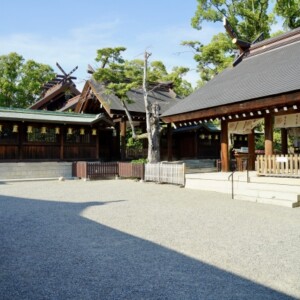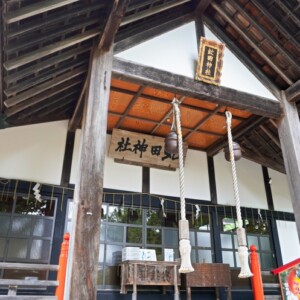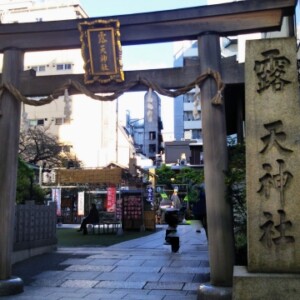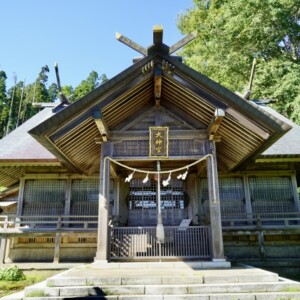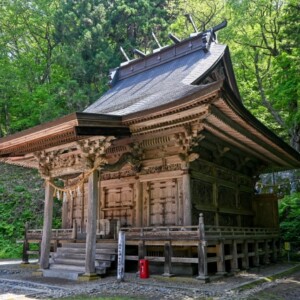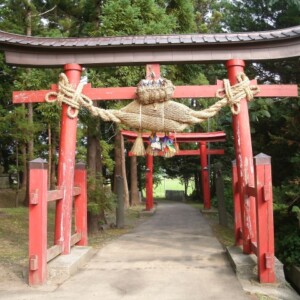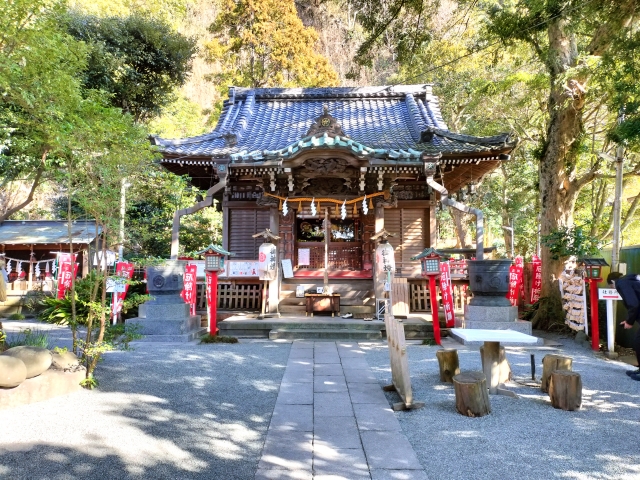
Yakumo Jinja|Complete guide to the history, highlights, and worship information of this historic shrine
Yakumo Shrine, located in Omachi, Kamakura City, Kanagawa Prefecture, was founded in the Eiho era (1081-1084) and is known as the oldest shrine in Kamakura to ward off bad luck. It is said that the shrine was founded when Shinra Saburo Yoshimitsu, on his way to Oshu, invited the deity of the Gion Shrine in Kyoto to Kamakura, where an epidemic was spreading, and for more than 900 years since then, the shrine has been loved by local people with the nicknames “Yakumo-san” and “Otenno-san. It is a venerable old shrine that attracts many worshippers for its blessings to ward off bad luck and bring good fortune.
Outline and basic information about Yakumo Shrine
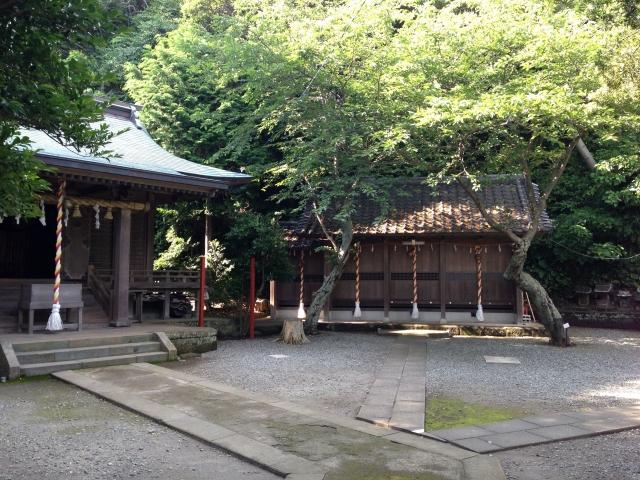
Yakumo Shrine is located in Omachi, Kamakura City. Originally called Kamakura Gion Shrine or Gion Tenno-sha, it was renamed to the present name during the Meiji Restoration. The shrine grounds are small, but the atmosphere is solemn and filled with a sense of history, making it a precious space where visitors can forget the hustle and bustle of the city and worship in tranquility.
History and Origin
According to shrine legend, the shrine was founded in the Eiho period (1596-1598) when Minamoto no Yoshimitsu, on his way to Oshu, saw an epidemic spreading in Kamakura (now Tokyo) and invited the deities of the Gion Shrine in Kyoto to worship at the shrine. Minamoto no Yoshimitsu, also called Shira Saburo Yoshimitsu, was a well-known military commander of the late Heian period.
In the Oei period, a shrine enshrined at the residence of Yoshimitsu’s descendant, the Satake family, was enshrined together and called Satake Tenno. During the Edo period, the shrine received a red seal from the shogun and was revered as “Gion-sama” by the local people.
With the separation of Shintoism and Buddhism during the Meiji period (1868-1912), the name of the shrine was changed from “Kamakura Gion Shrine” and “Gion Tenno-sha” to the current “Yakumo Shrine”. The name of the shrine is derived from a poem written by Susanoo in Japanese mythology, “Yakumo tate Izumo yaegaki Tsumago ni yaegaki wo makuro senno yaegaki” (Yakumo stands eight clouds, eight layers of clouds, eight layers of fence in Tsumago, eight layers of fence in Tsumago).
Gods and Benefits
The deities of Yakumo Shrine are Susanoo-no-Mikoto and other gods of the Gion faith. Yakumo Shrine is positioned as a shrine of the Gion faith with Ushitotenno and Susanoo as deities.
As for the main benefits, the primary ones are to ward off bad luck and epidemics, as can be seen from the origin of the shrine’s founding. The shrine is also widely believed to be a shrine of good fortune and good luck. The shrine is visited by many worshippers, especially those of bad luck and those wishing for good health, and is well known as one of the best power spots in Kamakura.
Yakumo Shrine Highlights and Features
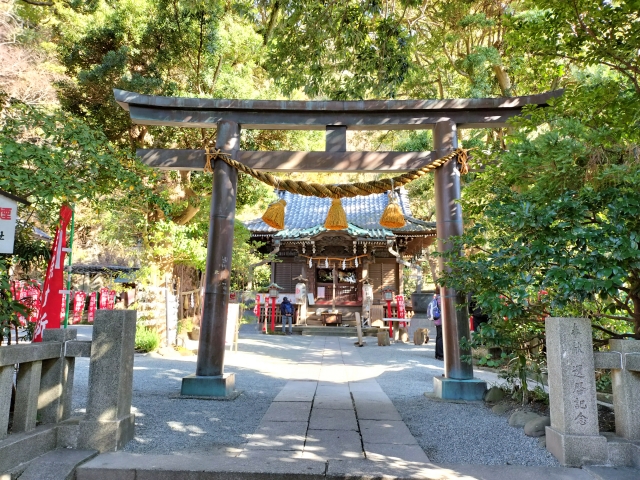
Yakumo Shrine is not large in size, but it is dotted with many attractions that only a historic shrine can offer. Once you step into the shrine grounds, you will be surrounded by a quiet and sacred atmosphere that you would not expect to find in an urban area, and you can feel the long history of the shrine.
Architectural and Structural Attractions
The shrine pavilions, which form the heart of the shrine, are located in the small precincts, and include a “sacred tree” and a “treasure hall” in which a four-seated portable shrine is enshrined. The shrine pavilions maintain the traditional shrine architectural style while creating a friendly atmosphere.
In the Hozoden (Treasure Hall) of Yakumo Shrine, the Mikoshi (portable shrine) and other objects presented at the “Kamakura Omachi Festival” are enshrined. Visitors are free to view the mikoshi through the windows, but they can see the magnificent mikoshi. These mikoshi are valuable cultural assets used in historical festivals, and their majestic construction is well worth seeing.
Places of interest and cultural assets in the precincts
The most impressive feature of the shrine’s precincts is the magnificent sacred tree towering in front of the shrine pavilion. Underneath the sacred tree is a large force stone called the “Shilla Saburo Tegamaishi. The name is given to the symbolism of Yoshimitsu Yoshimitsu, who was a man of letters and military prowess. This tegama-ishi stone has attracted the attention of many worshippers as a valuable historical site that tells the story of Minamoto no Yoshimitsu’s monstrous strength.
The approach to the shrine is lined with votive prayer streamers, which testify to the shrine’s faithfulness as a shrine for warding off bad luck. These red streamers are an important element in the atmosphere of the shrine grounds and symbolize the wishes of the worshippers.
Yasu-sha and Precinct Shrines
There are several Yakumo Shrine shrines enshrined within the shrine grounds, each offering different benefits. The Ontake Sambu Shrine is located to the far right of the Yakumo Shrine building, and the Suwa Shrine, Inari Shrine, and Oiwa Inari Shrine are located to the left of the building.
It is said that by paying a visit to these shrines in combination with a visit to the main shrine, one can receive multifaceted blessings. In particular, Ontake Sambu Shrine is known for its unique benefits, such as mountain worship, Suwa Shrine for its longevity in military affairs, and Inari Shrine for its prosperity in business.
Guide to Worship and Visiting the Shrine
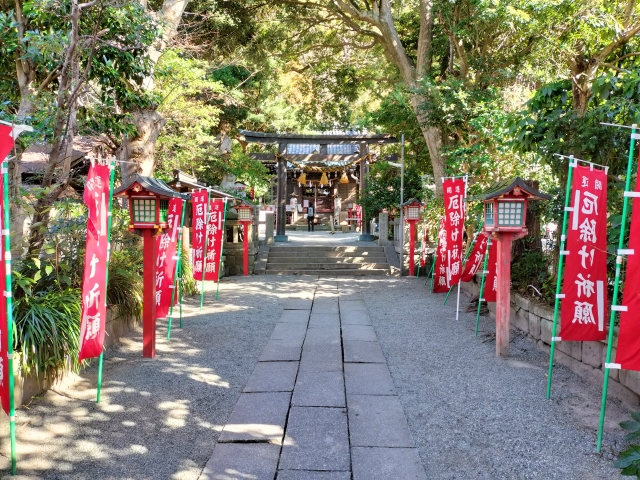
Visiting Yakumo Shrine, visitors can receive deeper blessings by following the etiquette handed down from the ancient times. As the oldest shrine in Kamakura, it is said to offer exceptional spiritual blessings, especially to those who have reached the age of misfortune and to those who wish to pray for good health.
Worship Etiquette and Manners
When visiting a shrine, bow before passing through the torii gate and walk on either side of the path, avoiding the center of the path. After purifying the body and soul at the hand-watering basin, visitors should bow in front of the shrine building in the manner of “ni-ai ni clap-toe ichi-ai” (two bowings, two claps, one bowing).
Prayers to ward off bad luck are especially popular at Yakumo Shrine, and formal prayers are available. If you wish to pray, please consult with the shrine office in advance. It is also believed that you will receive more comprehensive blessings if you remember to visit the shrine’s branch offices as well.
Annual and Seasonal Events
The most important event at Yakumo Shrine is the annual festival held in July each year. This annual festival is known locally as the “Omachi Festival” and is a traditional cultural tradition that has continued for over 900 years in Kamakura.
The sight of the portable shrines of the four shrines, lit by lanterns, standing side by side in a row is beautiful and fantastic. It is a traditional festival that has long been handed down from generation to generation, promising “the eradication of evil and plague, inviting good fortune and prosperity” to both those who carry the portable shrines and those who worship them. In this festival, four portable shrines enshrined in the treasure hall parade through the shrine, praying for good luck and protection from bad luck.
In spring, the double-flowered cherry trees are at their best in the precincts of the shrine, making it a popular spot for quiet cherry blossom viewing. However, due to typhoon damage, some of the cherry blossoms cannot be seen at present, but the nature in the precincts of the shrine is beautiful throughout the four seasons.
Red Seal and Good Luck Charm Information
Red seals are available at the shrine office. The initial fee is usually 300 yen, but between 12:00 noon and 1:30 p.m. the fee is 500 yen. This is a unique system that is set up in consideration of the priests’ break time.
You can also obtain red seals for Amanawa Shinmei Shrine, Hiruko Shrine, Junisho Shrine, and Kumano Shrine (Jomyouji Temple). This is a rare opportunity to receive several red seals in one visit to Yakumo Shrine.
A variety of amulets are available, including amulets to ward off bad luck. For details, please ask at the shrine office during your visit.
Access and usage information
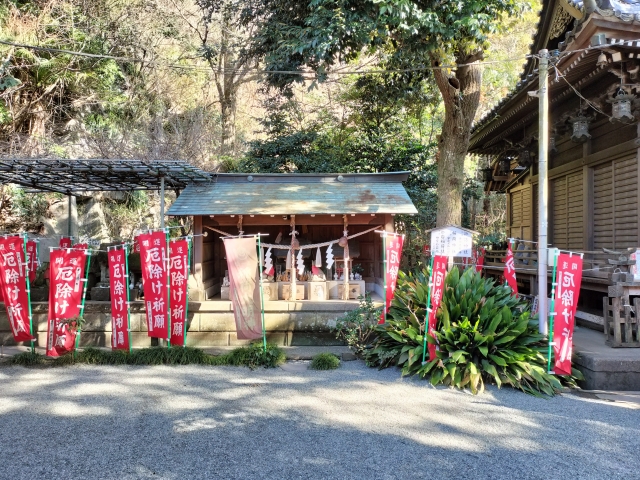
Yakumo Shrine is located within walking distance of Kamakura Station, making it an easy stopover during sightseeing in Kamakura. The shrine is quietly located in a residential area, allowing visitors to enjoy a serene visit away from the hustle and bustle of the city.
Access
The most convenient access by train is from the East Exit of Kamakura Station on the JR Tokaido and Yokosuka Lines and the Enoshima Electric Railway, which is about an 8-10 minute walk away. It is easy to find Yakumo Shrine by the signboard around “Honkaku-ji Temple.”
If you use the bus, take the Keikyu Bus “Kamara 30 or 31” from Kamakura Station, get off at “Omachi Yotsukaku” and it takes about 2 minutes on foot. However, since the distance from the station is not that long, we recommend that you visit the shrine on foot.
There are many sightseeing spots nearby, such as Anyoin Temple and Myohonji Temple, both associated with Hojo Masako, making a full day of sightseeing enjoyable.
Hours of Admission, Fees, and Parking Information
The grounds of Yakumo Shrine are generally open to visitors. The shrine is open to visitors during free hours, and there is no entrance fee. However, we recommend that you visit during the reception hours of the shrine office (generally from 9:00 to 17:00) if you wish to receive a formal prayer or to obtain a red seal.
Since there is no parking, it is recommended to walk from Kamakura Station. There are paid parking lots nearby, but they may be full on weekends. Kamakura is a popular tourist destination, especially on weekends and during the tourist season, when traffic jams can be expected, so public transportation is recommended.
The back of the Yakumo Shrine grounds is the starting point of the Gionyama Hiking Trail, and the entrance to the hiking trail is located by the shrine. Those who wish to enjoy a light hike can enjoy a nature walk in conjunction with their visit to the shrine.
<Address> 1-11-20 Omachi, Kamakura City, Kanagawa Prefecture 248-0007
Reference site
Kanagawa Prefectural Shrine Office: https://www.kanagawa-jinja.or.jp/shrine/1205004-000/
Kamakura Omachi Festival official website: https://www.kamakura-omachi.jp/



